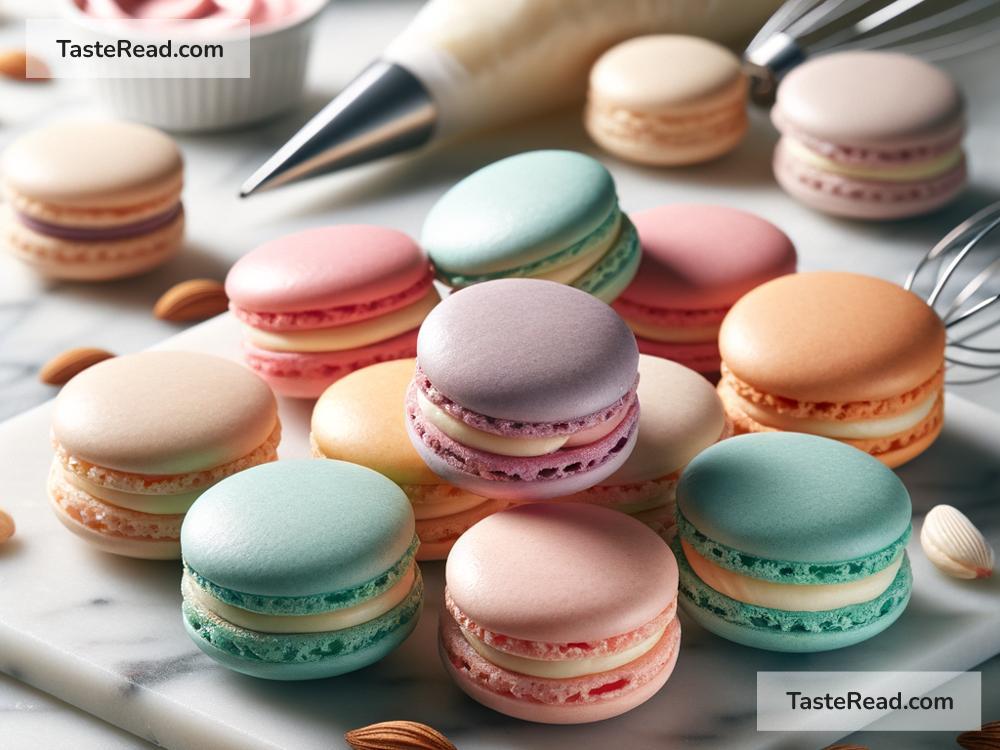Mastering Homemade Macarons: A French Dessert Recipe
If you’ve ever admired a display of colorful macarons at a bakery, you’re not alone. These petite French desserts are delightful treats with a crunchy shell and soft, chewy filling. They come in all sorts of flavors like chocolate, vanilla, raspberry, and pistachio, and they’re perfect for special occasions, gifts, or simply indulging yourself. While macarons may seem intimidating to make, with the right tips and steps, you can master this dessert in your own kitchen. Let’s learn how to make homemade macarons with confidence!
What Are Macarons?
Macarons are small, round sandwich cookies made with ground almonds, egg whites, powdered sugar, and granulated sugar. They have smooth, shiny tops and ruffled edges (called “feet”), which make them look elegant and fancy. The cookies are filled with buttercream, jam, ganache, or other sweet fillings. French macarons are famous for their delicate texture and beautiful pastel colors.
What You’ll Need
To succeed at making macarons, it’s important to follow the recipe carefully. These cookies are less forgiving than other desserts, so precision is key. Here’s what you’ll need:
Ingredients:
- 1 cup (100g) almond flour
- 1 3/4 cups (200g) powdered sugar
- 3 large egg whites at room temperature
- 1/4 cup (50g) granulated sugar
- Food coloring (optional)
- Your choice of filling (e.g., buttercream, jam, or ganache)
Tools:
- Sifter or fine-mesh sieve
- Mixing bowls
- Hand or stand mixer
- Rubber spatula
- Piping bag with a round tip
- Baking sheets and parchment paper
- Food scale (optional, but helpful!)
Step-by-Step Instructions
Follow these steps carefully to achieve macarons that are bakery-worthy:
Step 1: Prepare Your Ingredients
Start by sifting the almond flour and powdered sugar together into a bowl. This will help ensure your macarons are smooth and free of lumps. Sifting is key to achieving the signature texture of macarons. Set the mixture aside.
Step 2: Whip the Egg Whites
In a clean, dry bowl, whip the egg whites using a mixer. Start on low speed and gradually increase to medium-high. When the egg whites become foamy, add the granulated sugar slowly. Continue whipping until stiff peaks form. To test, lift the whisk—if the egg whites stick straight up, you’re good to go! Add a few drops of food coloring if you want your macarons to be a specific color.
Step 3: Fold in the Dry Ingredients
Now, it’s time for the tricky part: folding. Add the sifted almond flour and powdered sugar mixture to the egg whites about 1/3 at a time. Use a rubber spatula to gently fold the mixture together. Be careful not to overmix or undermix—it should flow like thick lava when lifted from the spatula. This is called “macaronage.” Overmixing will cause the batter to spread too much, and undermixing will prevent the cookies from forming proper “feet.”
Step 4: Pipe the Batter
Transfer the batter to a piping bag fitted with a round nozzle. Pipe small, evenly-sized circles onto a parchment-lined baking sheet, leaving some space between each cookie. If you don’t have a good eye for size, you can draw small circles (about 1.5 inches in diameter) on the back of the parchment paper as templates.
Step 5: Rest the Batter
Let the piped macarons sit at room temperature for about 30-60 minutes, or until the tops feel dry when gently touched. This is a crucial step—it helps the macarons form their signature “feet” during baking.
Step 6: Bake
Preheat your oven to 300°F (150°C). Place the baking sheet in the middle of the oven and bake for 12-15 minutes. Avoid opening the oven while they bake! Once done, the macarons should have risen slightly and formed their feet.
Step 7: Cool and Fill
Allow the macarons to cool completely on the baking sheet. Once cooled, gently remove them and match pairs of similar-sized cookies. Add your filling (like buttercream or ganache) to one cookie and sandwich it with the other. Be gentle—macarons are fragile!
Tips for Success
- Measure Precisely: Use a food scale for the most accurate measurements. Slight variations can affect the end result.
- Room-Temperature Egg Whites: Egg whites whip better when they’re at room temperature.
- Use Parchment Paper or Silicone Mats: These help prevent sticking during baking.
- Practice Folding: The macaronage step is crucial, and it takes practice to get the batter just right.
- Experiment: Try different flavors and colors! Add extracts (like vanilla or almond) or mix cocoa powder into the dry ingredients for chocolate macarons.
Enjoy Your Macarons
Making macarons at home might take a few tries to perfect, but don’t let that discourage you! Each attempt gets easier as you learn the techniques and find the right consistency. Once you’ve mastered this French dessert recipe, you’ll feel proud every time you share your beautiful creations with friends and family.
Happy baking—and bon appétit!


